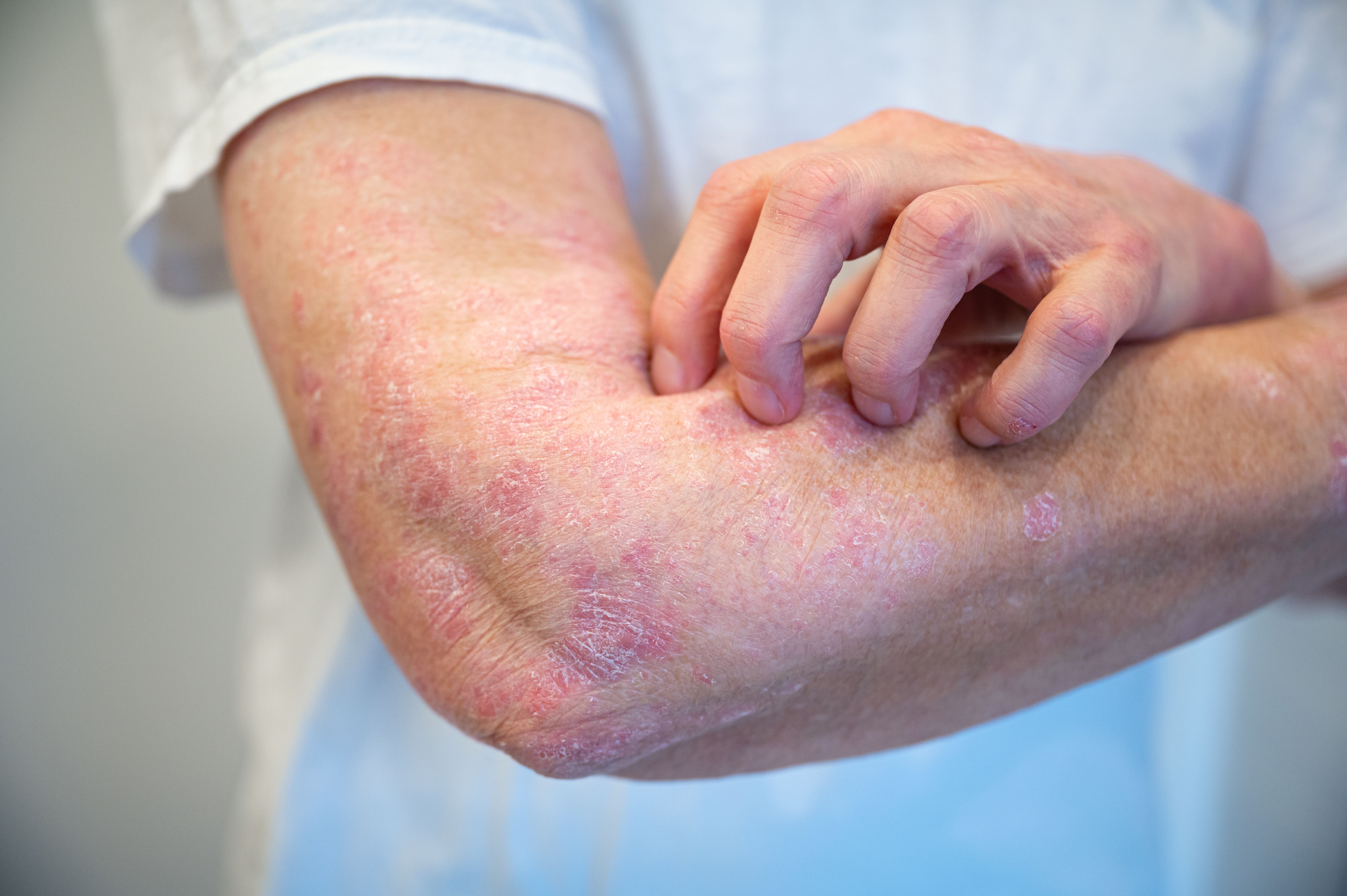- Acne
- Actinic Keratosis
- Aesthetics
- Alopecia
- Atopic Dermatitis
- Buy-and-Bill
- COVID-19
- Case-Based Roundtable
- Chronic Hand Eczema
- Chronic Spontaneous Urticaria
- Drug Watch
- Eczema
- General Dermatology
- Hidradenitis Suppurativa
- Melasma
- NP and PA
- Pediatric Dermatology
- Pigmentary Disorders
- Practice Management
- Precision Medicine and Biologics
- Prurigo Nodularis
- Psoriasis
- Psoriatic Arthritis
- Rare Disease
- Rosacea
- Skin Cancer
- Vitiligo
- Wound Care
News
Article
Guselkumab Demonstrates Significant Skin Clearance in Hard-to-Treat Moderate Psoriasis Sites
Author(s):
Key Takeaways
- Guselkumab demonstrated significant efficacy in treating moderate plaque psoriasis in sensitive areas, surpassing topical treatments.
- The SPECTREM study is the first randomized, controlled trial for low BSA plaque psoriasis in special sites.
Phase 3b study showed promise in clearing moderate PsO in sensitive areas for patients unresponsive to topical treatments.
Image Credit: © Daniel Beckemeier - stock.adobe.com

At this year’s Fall Clinical Dermatology Conference, Johnson & Johnson unveiled pivotal results from its phase 3b SPECTREM study (NCT06039189),1 shedding light on the benefits of guselkumab (Tremfya) for patients with moderate plaque psoriasis in sensitive regions, who haven’t seen improvement with topical treatments alone.2
SPECTREM marks the first randomized, controlled study designed specifically for moderate low body surface area (BSA) plaque psoriasis that persists in special sites.
Researchers observed that guselkumab led to positive outcomes in challenging areas, such as the scalp, face, skin folds, and genitals, with results demonstrating that most patients treated with guselkumab achieved “clear” or “almost clear” ratings on the Physician’s Global Assessment (PGA) scale, a significant improvement over those who received only topical therapies.
The benefits extended across multiple sensitive areas, including the scalp, face, skin folds, and genital regions. In the scalp, treatment with guselkumab yielded substantial reductions in both psoriasis lesion size and discomfort, with 75.0% of patients achieving significant clearance (IGA 0/1) compared to 14.5% in the placebo group. Complete clearance in the scalp was achieved by 60.3% of patients receiving guselkumab versus 9.3% of those on placebo.
In the face and skin folds, patients using guselkumab saw considerable improvements in the appearance and sensation of affected skin. For the face, 87.8% of patients achieved significant clearance compared to 28.6% of those on placebo, while complete clearance was seen in 75.7% of patients treated with guselkumab compared to 23.9% of the placebo group. In the skin folds, 86.5% of guselkumab-treated patients achieved clearance compared to 28.8% of the placebo group, with complete clearance in 76.6% of patients versus 24.2% on placebo.
Furthermore, in the genital areas, results included reduced pain and inflammation in one of the most difficult regions to treat. 78.0% of patients receiving guselkumab achieved significant clearance compared to 37.5% of those on placebo, and 72.7% achieved complete clearance compared to 32.7% with placebo.
Participants in the study also reported significant improvements in itch, pain, and quality of life scores, reflecting guselkumab's impact on overall wellbeing. 52.9% of patients achieved a Psoriasis Area Severity Index (PASI) 90 response compared to 6.2% in the placebo group, and the average patient saw over 80% improvement in both BSA and PASI scores compared to placebo. Additionally, 48.9% of guselkumab-treated patients reported Dermatology Life Quality Index scores of 0/1 compared to 3.5% in the placebo group, and 62.7% achieved a 4-point or greater improvement in Psoriasis Symptoms and Signs Diary itch scores compared to 12.5% for placebo.
“People who have special site plaque psoriasis with lesions that cover a smaller total area of their body are often only prescribed topical treatments and not considered candidates for advanced therapies as treatment decisions are often driven by BSA coverage not symptomic burden,” said Linda Stein Gold, MD, in a news release.1 Stein Gold is director of Dermatology Clinical Research at Henry Ford Health and a SPECTREM investigator.
“Results of the SPECTREM study could represent a new approach to care for patients with low BSA psoriasis, as the majority of patients treated with Tremfya achieved clear or almost clear skin.”
For more news from Fall Clinical, subscribe to receive our eNewsletter.
References
- ClinicalTrials.gov. A study to evaluate guselkumab in participants with moderate to severe plaque psoriasis and involvement in special areas (SPECTREM). ClinicalTrials.gov Identifier: NCT06039189. https://clinicaltrials.gov/study/NCT06039189. Published September 15, 2023. Accessed October 24, 2024.
- New SPECTREM study results demonstrate Tremfya (guselkumab) achieves clearance in overlooked and undertreated plaque psoriasis. News release. Johnson & Johnson. October 25, 2024. Accessed October 25, 2024.
Newsletter
Like what you’re reading? Subscribe to Dermatology Times for weekly updates on therapies, innovations, and real-world practice tips.










